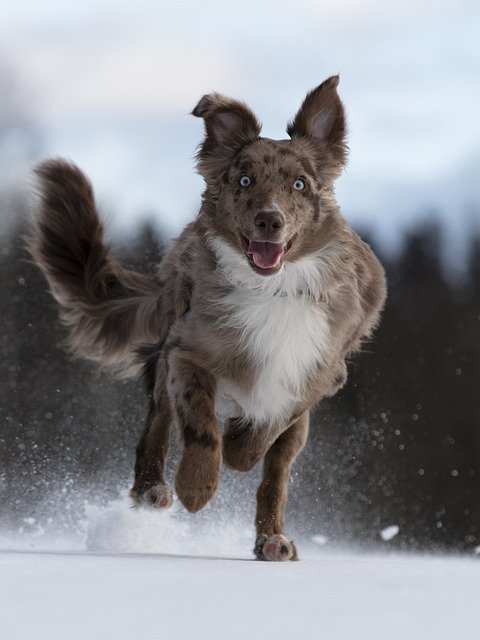Snow Running
 A recap
A recap
I ran a bunch of miles in the woods this week both during daylight hours and in the dark. I ran during a major storm that plastered everything with a couple inches of hard crunchy snow and ice. I ran afterwards on top of that crunchy snow and ice. And I ran as it melted too.
I find it easier to just keep running outside through the winter. Sometimes it is more challenging, but for the most part that challenge is in my head. Your body adapts to the cold and the dark quickly. The snow is usually manageable.
Here is New England I’m usually running in a temperature band of zero Fahrenheit to just over freezing. Typically, it’s in the 20’s or 30’s. So, cold, but not terrible. I think our all-time low record was minus 12 Fahrenheit.
I know some people will hide in the confines of their house when the trails pick up a little snow. Maybe they’ll just stop running for the season. Maybe they’ll switch to an indoor trainer or a treadmill. They’re afraid to venture out into the elements when it gets cold and snowy.
I’m here to tell you that you don’t have to. You can keep running in winter conditions. As long as you understand what you’re getting yourself into.
Let’s cover a couple of things. First the ever-popular question of what to do about shoes in these precarious winter conditions. Second, how to dress. And finally, what to expect.
But, before we get to the tactical stuff I want to talk about the conditions you may find. Like I said, we had a storm where it rained hard for a couple hours, switched over to a heavy wet snow for a couple hours and then stayed cold for a couple days. That produces a specific set of conditions. There are lots of different conditions you can encounter where you are. This is just one of them.
This produced a hard crusty snow. Like everything had been sprayed with ceramic. The dog hated it because it hurt his feet. It was great for running. It had just enough give to it to get good traction. It smoothed out the normally technical trails with a nice layer of runnable crunchiness. It was like someone had paved the trails.
This isn’t always the case. If you get a dry snow that comes with colder weather, it’s harder to run in. It’s a bit like running on the beach in soft sand. You have to lift your foot up and out of the snow then plant it back down through the snow. On the foot plant it gives and slips so you loose energy.
It’s hard work.
The worst kind of snow is where you get a deep snow, let’s say over 6 inches and then get a crust on top from freezing rain. It’s almost impossible to run in. You have to post hole through the crust with every stride and then pull your foot back out through the crust on the forward step.
Deep snow is a challenge too. Anything over 6-8 inches and you can’t get your stride going because of all the post holing and lifting. For this deep snow you may want to invest in a pair of snowshoes. Or cross-country skis. You can still get out in it but it’s super exhausting to try to run through. I mean, it’s a great workout, but at some point it’s not running anymore.
When I say you can still get out and run in the snow and ice I primarily mean normal, east runs. Any kind of speed work or other workout is going to be a stretch. You can certainly drive your heart rate up, but you can’t get the faster running motion. Plus, if you have to plant your foot with force, like on navigating a sharp corner, it gets dicey. You’ll end up on your back seeing stars or hurt yourself.
So – let’s talk about footwear then. For most of my snow running I just use whatever trail shoes I’m already running in. That’s right. “Gasp! You don’t do anything special?” Nope.
I’m currently running in Hoka SpeedGoats. These have a nice aggressively lugged outsole that grips in all kinds of conditions, including the snow and ice. Depending on the conditions I may just wear an old pair of road shoes that I don’t mind getting wet.
My point is you can run in the snow and ice in the shoes you already have. Again, it depends on how severe the snow is, but for anything less than a couple hours your regular shoes will be just fine. They are going to get wet, but they are just fine.
Now you can, if you want, do the old wood screws in the shoes trick if you’re an engineer type and plan to run in a lot of ice conditions. I tried this and found that it was more hassle than it was worth.
You can also get any number of strap on gripper thingies, like YakTraks, and, yeah, they work just fine. In some conditions they really can make a difference. But, again, having run in them I find it’s just one more thing to hassle with. Don’t get me wrong, they work, but I also find they make you overconfident.
When the snow starts getting deep enough you can wear your gaiters to keep the snow out of your shoes. Most trail runners will have gaiters laying around. I just wear my normal thin running socks. I’ve never had my feet get cold. Even when snow gets down into the shoe. As long as you keep moving, you’ll be ok.
So how do you run in your normal shoes in the snow?
Like everything else it comes down to maintaining good running form. You foot will lose traction when it hits the ground with a shearing force. That’s only going to happen if you overstride and come down on your heel. If you keep your form clean and land lightly on the mid-front of the foot there is less shear force.
Snow running is a lot like trail running in that you are landing with a light and loose foot plant so that you are essentially testing the ground as you land on it. If something goes wrong, like an ankle starts to roll or lose traction, you have enough quickness in your cadence so that you can quickly shift to the next stride and avoid planting full weight on the troublesome landing surface.
What I typically wear is a technical long sleeve shirt and then a fleece sweater over that. It’s not a special fleece sweater, any thick fleece will do. I do have some running specific winter gear and it works well, there’s nothing wrong with it, but I like the fleece sweater.
I have various pairs of running gloves and my hands tend to get cold. When it drops below freezing, I wear a big pair of mittens. I also have a bunch of fuzzy winter hats of different thicknesses that I wear. You might want to consider a safety orange winter hat if you’re in an area with hunters.
When it drops below 40 or so I typically wear running tights. I have friends who never wear tights. They run in shorts when it’s below zero. To each his own. I also have a couple tech neck gaiters that are very handy in the apocalypse because they keep you warm and you can pull them up as an impromptu mask when you’re passing someone.
I’ve gotten over 40 miles in the trails since it snowed. I’ve actually fallen less since the snow! Why? Probably because I’m running mindfully because of the snow.
That’s my main message for you. Don’t be afraid of going out in the snow and cold and ice. It probably won’t kill you. You don’t need any special equipment. You just need to slow down and watch your form.
There is nothing as invigorating as being out in the woods on a crisp winter night. Looking up at the stars literally popping out of the dry sky. All is silence except for your own breath and heartbeat. The steam rises off your sweater.
It’s primal. It will make you feel alive. Give it a try.

